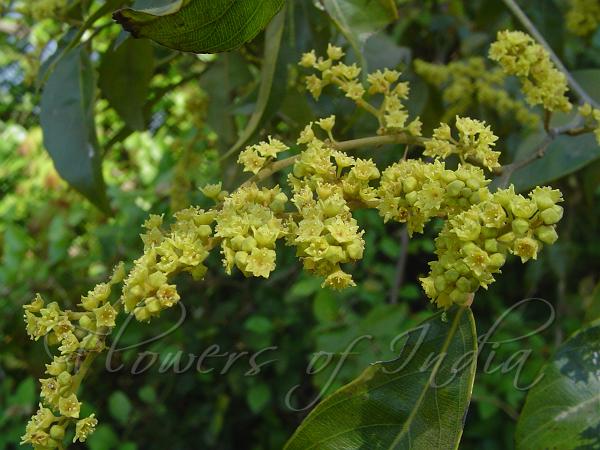|
| Red Creeper |
|

|

| File size | 582455 |
| Original date | 1/15/08 12:17 PM |
| Resolution | 1280 x 960 |
| Flash | Flash did not fire |
| Focal length | 6.3mm |
| Exposure time | 1/250s |
| Aperture | 5.6 |
| Focus Distance | |
| Metering Mode | Spot |
| Camera make | SONY |
| Camera model | DSC-P52 |
| Sensor type |
|
|
|
|
Photo: |
Botanical name: Ventilago madraspatana Family: Rhamnaceae (Ber family)
Despite its name, there is nothing visibly red about the Red
Creeper. It is widely used to make a medicinal oil to apply to babies until
around 3 years age. When The root of this plant is just immersed in coconut
oil, it gives away red color. Hence the name.
Red Creeper is a climbing shrub, found in Indo-Malaysian region. Leaves are
variable - they can be circular to egg-shaped with an acute tip. Margins can
be entire or serrated, and the surface can be smooth or finely velvety. Small
greenish-yellow flower are fascicled on leafless branches, with an offensive
smell. Fruit is 5-6 cm, densely velvety, a pea-sized part and an oblong wing,
0.9-1.1 cm wide, surrounded by sepal tube at base. Some fishermen used the
long climbing stems as ropes. It flowers in winters.
Medicinal uses: Red Creeper is traditionally used to treat many disorders like
skin problems, fever, and diabetes and also used as digestive
carminative. It is believed to possess healing effect on
dyspepsia, colic disorder, leprosy, scabies, pruritis and other skin
disorders. The powder of stem bark mixed with gingelly oil is applied
externally to treat skin diseases and itches. The root bark is used as a
carminative, stomachic, stimulant.
Red Creeper is traditionally used to treat many disorders like
skin problems, fever, and diabetes and also used as digestive
carminative. It is believed to possess healing effect on
dyspepsia, colic disorder, leprosy, scabies, pruritis and other skin
disorders. The powder of stem bark mixed with gingelly oil is applied
externally to treat skin diseases and itches. The root bark is used as a
carminative, stomachic, stimulant.
Medicinal uses:
 Red Creeper is traditionally used to treat many disorders like
skin problems, fever, and diabetes and also used as digestive
carminative. It is believed to possess healing effect on
dyspepsia, colic disorder, leprosy, scabies, pruritis and other skin
disorders. The powder of stem bark mixed with gingelly oil is applied
externally to treat skin diseases and itches. The root bark is used as a
carminative, stomachic, stimulant.
Red Creeper is traditionally used to treat many disorders like
skin problems, fever, and diabetes and also used as digestive
carminative. It is believed to possess healing effect on
dyspepsia, colic disorder, leprosy, scabies, pruritis and other skin
disorders. The powder of stem bark mixed with gingelly oil is applied
externally to treat skin diseases and itches. The root bark is used as a
carminative, stomachic, stimulant.
| Identification credit: Prashant Awale, Dinesh Valke, J.M. Garg | Photographed at Sudhagad, Maharashtra. |
• Is this flower misidentified? If yes,